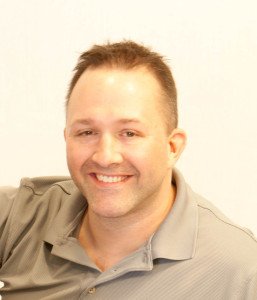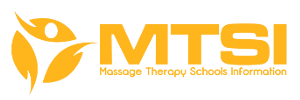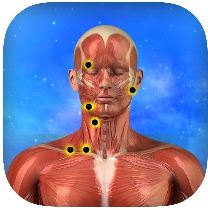
I co-own Keep In Touch Massage in Eagan, Minnesota. It’s a large massage practice that employs 16 massage therapists and five receptionists.
We’re open seven days a week. Our clients range from age seven to 97. We provide a variety of massage/bodywork services, including Active Isolated Stretching, Reflexology, Manual Lymph Drainage, etc. We have a great team that I’m honored to work with, and we often refer clients to each other.
2. Tell us why you chose to go into massage and at what point in your life did you decide to do so? What were you doing at the time? Where did you first hear about the massage career? What factors influenced your decision? What were you looking to get out of this decision?
Massage is one of the therapies that helped me overcome severe chronic pain and some musculoskeletal issues. At the time, I was pursuing a corporate career. The process of changing from pain-full to pain-free inspired me to become a trainer and eventually leave my job for massage school. I graduated from Northwestern Health Sciences University School of Massage in 2006, and I’ve passionately pursued continuing education and opportunities to promote the profession of massage therapy ever since.
3. What were some of your questions and concerns before further pursuing your massage therapy goals? Talk about concerns with school and the profession itself.
Going in, I knew that massage therapy is a profession with a checkered reputation, but I was surprised to learn that there is so little consistency in professional education, regulation, and standards of practice. These continue to be challenges, and I’ve taken an active role in efforts to improve/reform all three.
I teach continuing education classes, volunteer time with the American Massage Therapy Association (AMTA) and the Alliance for Licensing Massage Therapy (ALMT), mentor massage therapists, and volunteer time moderating online professional discussion forums for massage therapists.
4. What is your specialty and what are the top three contributing factors to your success today?
I am probably best known for my work with painful conditions, clients with complex health histories, and sports massage. Since 2004, I have also maintained a part-time personal training practice.
My success is partly due to my willingness to question what I’ve previously learned, my desire to improve upon it, and a habit of sharing what I’ve learned with my clients and colleagues. Progress is made only by moving forward. To move forward, you must be willing to leave some things behind.
5. What do you like about your specialty? What do you like about what you do in general as a career? Why?
I love helping people who are in pain, who struggle with dysfunctions, and who are motivated to improve their quality of life and/or their athletic performance. Being a part of their recovery is very gratifying, because I used to suffer, too. There is something about helping people feel better that makes me happy, no matter what type of massage work I’m doing.
6. What do you not like about what you do? Why?
Personal training clients understand the value of establishing a solid working relationship and pursuing long-term goals. They prioritize their training sessions, prepay for them, and understand why they are charged for any missed sessions. They don’t expect miracles in a single training session, and they are often willing to do their assigned “homework” between sessions. I would like more massage therapy clients to share these attitudes.
7. If there were three things you could change about your work or the industry as a whole what would they be? Why would you change them? What would you change them to?
I would love to have a mountain of credible evidence that provided a more complete understanding of how/why the work I do is successful (or not). I would love to see science and research literacy become a standard part of the foundation of every massage therapy class, both in school and in continuing education.
I would love to see more professional discussions in which the underlying assumptions of a method or philosophy are dissected and debated openly, with all participants held to the same standards.
8. How long do you plan to practice and what do you plan to do after?
Well, I’ve only been practicing since 2006, so I expect to practice for a long time to come. I have no idea when I would stop. However, as I teach more classes, I may have to cut back a bit. It’s not clear what the right balance will be for me.
9. Do you currently have another job or business whether full time or part time? Tell us a bit more about it and how you are able to juggle that with your massage career?
My personal training practice has been restricted to Monday and Wednesday since I was in massage school. That has worked well for me, and it breaks up my week so I’m not doing massage five days in a row.
Many people that have trained with me have issues related to pain/dysfunction, and so my knowledge of massage has informed that work, even as that work has informed the way I practice massage. Currently, I am employed part time at Burn Personal Training in Bloomington, Minnesota. Though my practices are in two different cities, some clients work with me in both capacities.
10. What are some mistakes you made in your career pursuit that you’d like to warn other students about so they can learn from your experience and avoid it?
When I first graduated from massage school, I started a mobile massage business. I loved the idea, but I wasn’t as prepared as I should have been, and I hadn’t taken the time to reflect on what would really be the best fit for me. Consequently, I struggled to market myself, and discovered too late that I have the wrong personality for a mobile massage business.
Instead, I realized that I want people to come to me, and that I really wanted to work for someone else and just get my hands on as many clients as possible so I could really polish the skills I learned in school. Eventually I dumped the mobile massage business and accepted a position at a business massage business that proved to be a good fit for me.
11. What would you advice someone who is looking at massage therapy schools? What do you recommend they look for and how? How do you recommend they determine whether the school is the right one for them?
The biggest mistake I see prospective students make is that they select their massage school based on whichever one is most convenient and/or cheapest. Many, many of my massage colleagues have lamented choosing a school that didn’t provide the type/level of education they really wanted.
So, before entering massage school, I strongly advise talking to professional massage therapists and employers of therapists to see what school(s) they would most recommend, and why. Then, visit the schools that have the best reputation and learn about the program, the facilities, the staff, and meet some of the students. Find which one will inspire you to pursue excellence, and that is likely to be the school that will best prepare you to become the type of therapist you want to be.
12. What do you recommend for someone who wants to go to massage school but cannot afford it?
Massage schools that are accredited may enable students to apply for (and receive) financial aid. Some schools and various massage organizations offer grants that can help with expenses. (I received a $500 grant while in massage school.) While checking out your massage school options, ask about financial aid options.
I also know people that just did whatever it took to save up the money. For some, it took years to do so. Others worked extra hours during massage school to pay for their tuition and books. Some did part of the program, then took time off to work and save, then returned to school. If you want it badly enough and are willing to make sacrifices, there is usually a way to make it happen.
13. What are your three biggest points of advice for an aspiring massage therapist today? What should they do/not do? What should they think about and consider?
Learn about the daily realities of being a massage therapist, including income, responsibilities, workload, and different types of working environments… BEFORE you enter massage school.
Get the best education you can, and then question and improve upon it as you practice and take more classes.
Engage with your future colleagues and lend your voice to discussions about education, regulation, and other issues that will impact the future of the profession you plan to enter.
14. Any open thoughts / comments – anything else that you’d like to share about yourself, the massage industry, profession, future, etc? If nothing, make one prediction for the future of massage?
Change is inevitable. Be a positive influence on what changes may occur.
Jason Erickson, CMT, NCTMB, CPT, CES, CAIST, BBA, BA, AA is a certified as a massage therapist, personal trainer, and Active Isolated Stretching Therapist. Jason co-owns Keep In Touch Massage in Eagan, MN, and trains clients at Burn Personal Training in Bloomington, MN. His work with elite and amateur athletes complements his primary focus on management and resolution of pain and dysfunction. Jason also teaches workshops and seminars for massage therapists and personal trainers. He can be reached on his website here.








Leave a Reply